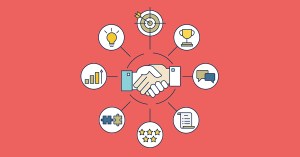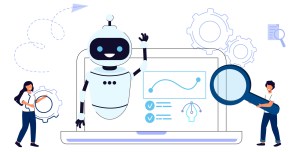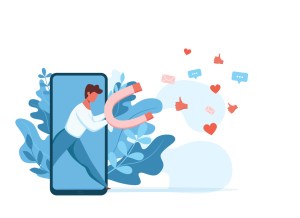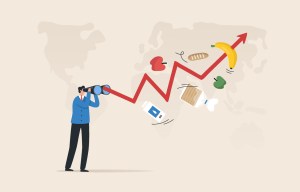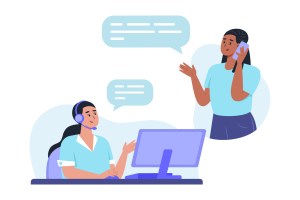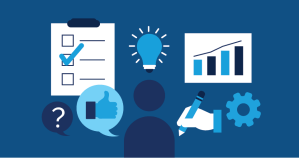3 Ways To Ensure Customer Anger Doesn’t Turn Into Rage
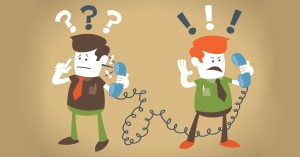


Rage comes at a real cost for companies. It’s not just the toll it takes on service agents, but the bottom line. Not only might an angry customer not come back, but they could convince others to avoid bringing their business to you based on their bad experience.

Salesforce Canada
Even if you haven’t experienced road rage personally, you probably know what it looks like: that driver with his or her face yelling inaudibly behind the windshield, honking and maybe even making a rude gesture or two.
From a customer service perspective, that level of emotion is one of the worst scenarios an agent can face.
Sadly, there is evidence that rage in customer service environments is becoming all too common. For several years now, a firm called Customer Care Measurement and Consulting has produced the Customer Rage Study based on an in-depth survey. While the data comes from a U.S. sample and is more consumer-oriented, the nature of “rage” tends to be fairly universal.
When survey respondents were asked to rate their level of dissatisfaction in various customer service incidents, for example, 56% said they fell into the “rage” category of being extremely upset or very upset.
This is exactly the kind of thing that tools like Service Cloud were designed to prevent, by using data more strategically to ensure a bad situation doesn’t get even worse. The smartest way to use Service Cloud, of course, is to think not only about how to use the information you have, but what kind of information you need.
As a way of getting started, it might be easiest to think in terms of the customer service questions agents and organizations need to answer as they see signs of rage emerging.
What’s Really At Stake?
When organizations set goals around customer service, they might first focus on what they hope to achieve for their own benefit: better ratings, more repeat business and so on. For customers, though, the goals can be very different, and might be more oriented around the fallout they experience when products and services don’t work as they had expected.
According to the Customer Rage Study, for instance, customers who had gone through service challenges broke down the consequences into two main areas. The majority, or
60%, said they lost money. Nearly 40%, meanwhile, said they lost time. Both of those things are extremely valuable, and can often be interconnected — for many firms, time is money, in the sense that every minute they spend on a troubleshooting issue is one they can’t put towards growing their own businesses.
Service agents are often incredibly good at determining the full extent of the problem a customer is facing, but the impact of letting them down, or not helping them in just the right way, may never be discussed at the time. When they’ve reached the “rage” point, this may change — “This malfunctioning product is going to cost me thousands of dollars in productivity!” a customer might say — but not always. Instead, customers may vent on social media with with their peers in other organizations.
Customer service excellence is not just about solving problems but learning about what really matters to those on the other end of the phone, the email trail, the social media thread or other channel. Gaining insights into this question will go a long way towards prioritizing various kinds of service requests.
What Does Outstanding Problem Resolution Look Like?
The natural assumption might be that if you solve the customer’s problem, the customer’s rage will dissipate. Right? Wrong!
Customers that start out angry will stay incredibly angry, the survey suggested, especially if getting their issue resolved becomes a multi-phase project.
While about 24% of those surveyed said one service interaction was all it took, nearly as many, or 19%, had to contact the company they were dealing with a second time. Another 19% said it was way worse than that — a whopping seven interactions or more before they could have a question answered or problem dealt with. No wonder they’re frustrated!
This is where it might be helpful to think like a marketing department. When marketers are trying to nurture demand, they carefully consider the kind of impression or customer experience they want to create. This is the journey that might begin from the moment a customer becomes aware of a company and its products and services to after they’ve bought something. Customer service excellence is about conducting a similar exercise. How can you get to resolving more problems the first time around?
Having the right data and learning from it will get you there. You can also add more self-service tools, or even chatbots that can work around the clock and ensure rage-fuelled customers aren’t kept waiting.
What Will Restore Trust And Retain Loyalty?
Rage comes at a real cost for companies. It’s not just the toll it takes on service agents, but the bottom line. Not only might an angry customer not come back, but they could convince others to avoid bringing their business to you based on their bad experience.
Don’t expect a simple “We’re sorry” to cut it, either. Less than a quarter of respondents to the Customer Rage Study were satisfied with an apology alone. Another 73% wanted financial or other compensation before their anger was soothed.
As you apply things like Service Cloud to analyze historical issues with customers, you’ll begin to get a sense of what problems will require this kind of extra step, so that members of the team will know when to make an offer right away rather than face demands from a customer.
It’s important to remember that, much like a driver stuck in traffic unexpectedly, customers tend to feel rage when they don’t know what else to do. It’s that feeling of helplessness, mixed with panic, that transforms mere annoyance into something much bigger. The best approach Canadian companies can take is to look for ways that technology can tap into the potential sources of rage and arm the team with whatever’s necessary to stop it before it starts.
This is where excellence in customer service is ultimately headed. The old focus on merely being faster and more reactive has become antiquated. Staying one step ahead of potentially volatile situations? It’s all the rage.

